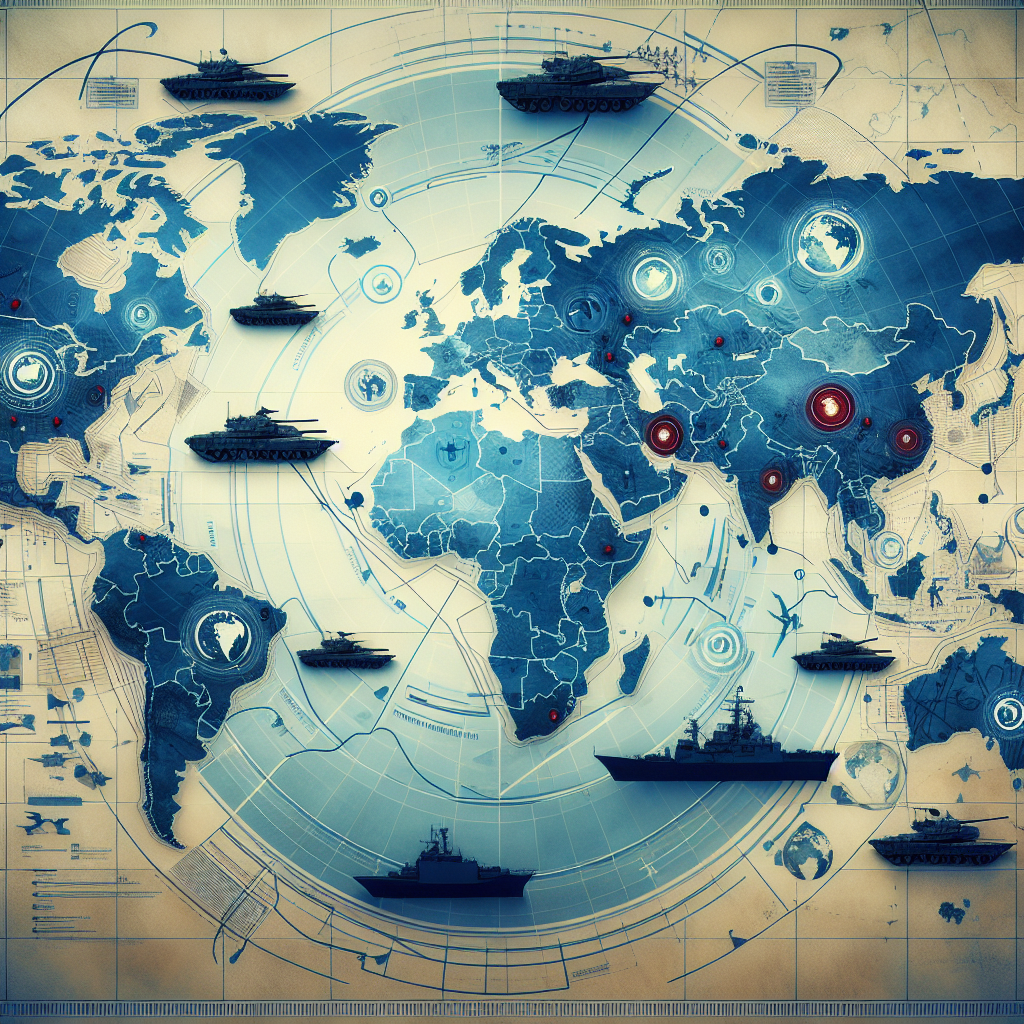Title: Geopolitical Tensions Escalate: A Closer Look at Global Military Actions
Introduction
In an increasingly interconnected and volatile world, geopolitical tensions and military maneuvers dominate headlines worldwide. Recent events serve as stark reminders of the fragile global order, with nations asserting dominance, responding to threats, or navigating complex compromises. From the United States' strategic deployment of stealth B-2 bombers near Iran and Yemen to Russia's escalated drone attacks on Ukraine, and the ongoing turmoil in Gaza, nations are taking bold steps with profound implications for diplomacy and security.
This article breaks down these pressing global issues, delves into the factors driving the tensions, and explores their broader implications on international relations. Whether you're a concerned global citizen or an avid follower of world events, understanding these developments is critical for making sense of today’s fast-shifting geopolitical landscape.
The US Deploys Stealth B-2 Bombers Near Iran and Yemen
The United States recently repositioned four stealth B-2 bombers to the remote Diego Garcia military base, positioned in the Indian Ocean. This strategic relocation raises eyebrows, as the bombers now lie within striking distance of both Iran and Yemen. It’s no coincidence that this move coincides with ongoing airstrikes targeting Yemen’s Houthi militia.
What’s fascinating about this relocation is its departure from the US pattern of operating via Middle Eastern bases belonging to American allies. By utilizing an Indian Ocean territory, the US demonstrates its intention to project power while avoiding regional complications often tied to allied nations’ domestic politics.
The timing of such moves is crucial. With simmering tensions between Iran and Israel, and the US extending warnings over Iran’s nuclear developments, these bombers send an unmistakable signal. Still, they also reflect Washington’s strategy to remain militarily prepared without having "boots on the ground."
Russia's Intensified Drone Offensive in Ukraine
Adding fuel to an already devastating conflict, Russia mounted an intense drone bombardment on Ukraine in what Ukrainian President Volodymyr Zelenskyy referred to as preparation for a "major offensive." These attacks have worsened the ongoing humanitarian crisis while forcing NATO leaders to reexamine their support strategies for Kyiv.
Striking in waves overnight, the drone attacks specifically targeted key Ukrainian infrastructure. This tactic reflects Russia's evolving military strategy: crippling critical systems while maintaining relentless battlefield pressure. Yet, the implications go far deeper, as millions are left vulnerable without power or resources, heightening global awareness of this war's unrelenting brutality.
This renewed aggression also comes amid partial ceasefire proposals, showcasing the lack of trust between the two sides and signaling prolonged violence. Moreover, it highlights how modern warfare increasingly depends on unmanned technology, marking drones as central to future conflicts.
The Escalation in Gaza: Pope Francis’ Appeal
In the Middle East, the Holy See has joined many global voices in urging peace. Pope Francis recently called for an immediate halt to Israeli strikes on Gaza, emphasizing dialogue between warring factions and demanding the release of hostages.
The Israeli–Palestinian conflict remains one of the longest-standing geopolitical crises. The years of unresolved tensions have perpetuated cycles of violence, leaving Gaza's civilian population to bear the brunt. As the clamor for international intervention rises, Pope Francis’ call underscores the ethical and moral imperatives governments must consider when determining their next steps.
Although peace talks have intermittently resumed over decades, the likelihood of a definitive ceasefire today remains uncertain. Heightened regional complexities, shifts in leadership dynamics, and global distractions often derail meaningful progress.
How These Developments Reflect Broader Global Tensions
The examples above reveal overlapping patterns driving international conflicts. Nations compete for regional influence while grappling with power vacuums, historical grievances, and advancing technology in warfare. From stealth bombers and unmanned drones to heightened diplomatic friction, the interplay between strategic actions and their consequences leaves little room for error.
Furthermore, as countries like Canada experience growing political instability—symbolized by Prime Minister Mark Carney's recent call for a snap election—global powerhouses must also reckon with internal disruptions. Public sentiment, trade wars, and strategic alliances are veering in dangerous new directions, challenging the status quo.
Conclusion
Today’s geopolitical tensions reflect larger shifts in the balance of global power, military dynamics, and international diplomacy. With every missile launched, bomber deployed, or call for peace, the stakes rise not just for the involved nations but also for the world at large. As concerned global citizens, we must stay informed, hold accountable those in power, and advocate for solutions that prioritize diplomacy over destruction.
Now is the time to engage—whether by supporting humanitarian efforts, raising awareness, or simply educating yourself. With conflicts spanning continents, the story of geopolitical tensions is not confined to nightly news; it’s a narrative shaping the world for generations to come.
Frequently Asked Questions (FAQs)
Q1. Why did the US deploy stealth B-2 bombers to Diego Garcia?
A: The US positioned bombers in Diego Garcia to strategically deter Iran and Yemen while avoiding potential political complications with regional allies.
Q2. What is driving Russia's intensified use of drone warfare in Ukraine?
A: The shift highlights modern warfare's reliance on unmanned systems while showcasing Russia's intent to cripple Ukraine’s infrastructure ahead of larger offensives.
Q3. Why has Pope Francis called for a halt to Israeli strikes?
A: Pope Francis emphasized the need for dialogue, a ceasefire, and the release of hostages amid Gaza’s humanitarian crisis, urging global leaders to pursue peaceful solutions.
Q4. How do these conflicts collectively reflect global power struggles?
A: They exemplify the interplay of military dominance, resource control, and historical grievances amid evolving power dynamics across major nations.
Q5. What can ordinary people do to help during such conflicts?
A: Individuals can support humanitarian organizations, spread awareness about ongoing conflicts, or engage policymakers to advocate for diplomatic solutions.
Related Tags
#Geopolitics #MilitaryActions #GazaConflict #USIranTensions #RussiaUkraineWar #GlobalSecurity
Stay informed by reading more updates and share this article to spread awareness! Together, let’s navigate through these critical times 🌍.
